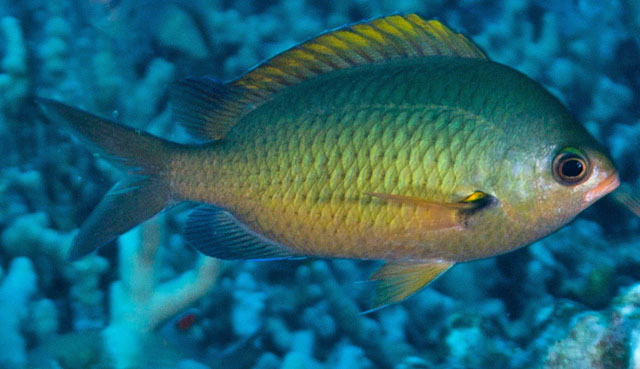| Pomacentridae (Damselfishes), subfamily: Chrominae |
| 15 cm SL (male/unsexed) |
|
reef-associated; marine; depth range 6 - 161 m, non-migratory |
| Eastern Pacific: endemic to the Hawaiian Islands. Have recently been reported from Midway Islands (Ref. 28620). |
|
Dorsal spines (total): 14-14; Dorsal soft rays (total): 11-13; Anal spines: 2-2; Anal soft rays: 12-13 |
| Benthopelagic (Ref. 58302). Collected from depths of 6 to 46 m. Sexual maturity at about 12.7 cm. Spawning period occur from February through May. Diet consists mainly of calanoid and cyclopoid copepods, but tunicates, mysids, euphausiids, crustacean larvae, larval polychaetes, siphonophores, and fish eggs are also taken (Ref. 7247). Oviparous, distinct pairing during breeding (Ref. 205). Eggs are demersal and adhere to the substrate (Ref. 205). Males guard and aerate the eggs (Ref. 205). |
|
Least Concern (LC); Date assessed: 01 August 2021 Ref. (130435)
|
| harmless |
Source and more info: www.fishbase.org. For personal, classroom, and other internal use only. Not for publication.
